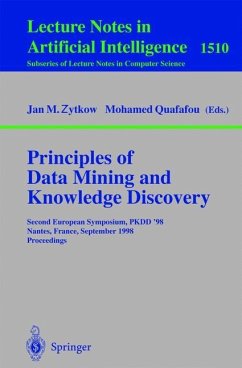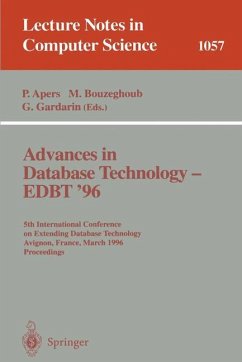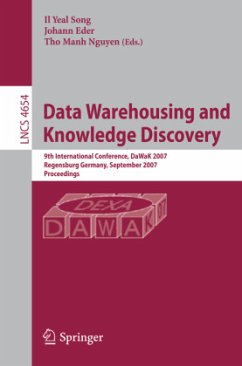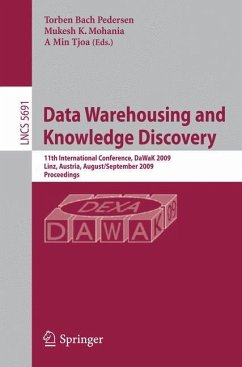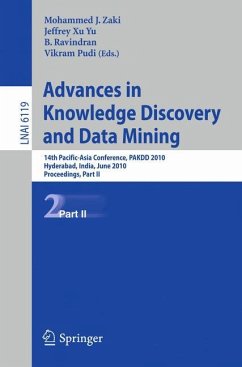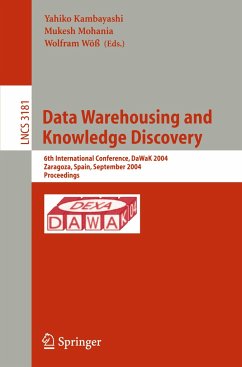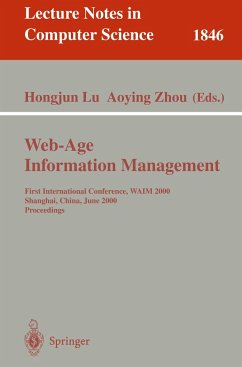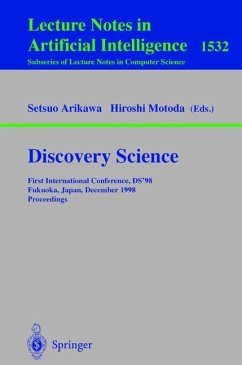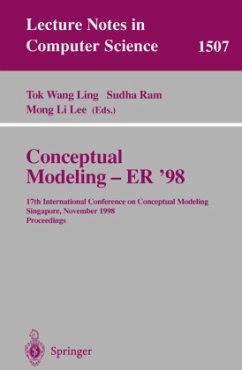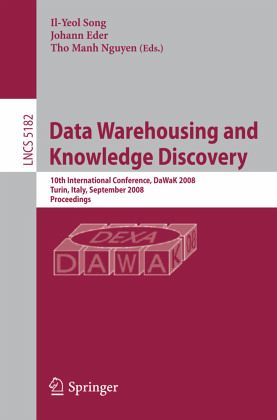
Data Warehousing and Knowledge Discovery
10th International Conference, DaWak 2008 Turin, Italy, September 1-5, 2008, Proceedings
Herausgegeben: Song, Il-Yeol; Song, Il-Yeol; Nguyen, Tho Manh; Eder, Johann

PAYBACK Punkte
20 °P sammeln!
Data Warehousing and Knowledge Discovery have been widely accepted as key te- nologies for enterprises and organizations as a means of improving their abilities in data analysis, decision support, and the automatic extraction of knowledge from data. With the exponentially growing amount of information to be included in the decision making process, the data to be processed is becoming more and more complex in both structure and semantics. Consequently, the process of retrieval and knowledge disc- ery from this huge amount of heterogeneous complex data constitutes the reality check for research ...
Data Warehousing and Knowledge Discovery have been widely accepted as key te- nologies for enterprises and organizations as a means of improving their abilities in data analysis, decision support, and the automatic extraction of knowledge from data. With the exponentially growing amount of information to be included in the decision making process, the data to be processed is becoming more and more complex in both structure and semantics. Consequently, the process of retrieval and knowledge disc- ery from this huge amount of heterogeneous complex data constitutes the reality check for research in the area. During the past few years, the International Conference on Data Warehousing and Knowledge Discovery (DaWaK) has become one of the most important international scientific events to bring together researchers, developers and practitioners. The DaWaK conferences serve as a prominent forum for discussing the latest research issues and experiences in developing and deploying data warehousing and knowledge discovery systems, applications, and solutions. This year's conference, the 10th Int- national Conference on Data Warehousing and Knowledge Discovery (DaWaK 2008), continued the tradition of facilitating the cross-disciplinary exchange of ideas, expe- ence and potential research directions. DaWaK 2008 sought to disseminate innovative principles, methods, algorithms and solutions to challenging problems faced in the development of data warehousing, knowledge discovery and data mining applications.






